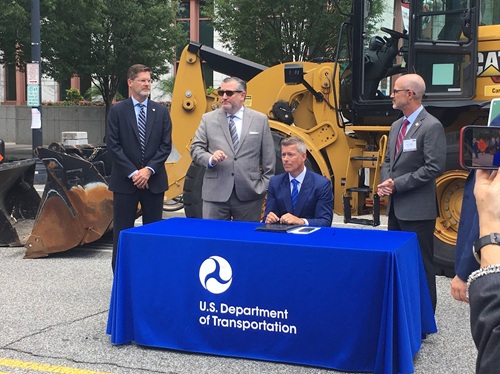The Senate passed the $2 trillion Coronavirus Aid, Relief, and Economic Security or CARES Act on March 25 by a vote of 96 to zero, which the House of Representatives then passed on March 27 by voice vote before heading to President Trump’s desk, who signed it that afternoon.
Sen. Richard Shelby, R-Ala., noted in a statement that 80 percent of the total funding provided in CARES Act is going directly to state and local governments.

“I am confident that this legislation will pave the way for us to overcome the current economic and public health crisis we are facing, allowing us to emerge stronger on the other side,” he said.
Analysis of the emergency funding measure conducted by the American Association of the State Highway and Transportation Officials indicates the U.S. Department of Transportation will receive $31.1 billion in funds to disburse in several directions:
- The Federal Transit Administration will receive $25 billion for transit providers, including states and local governments across the country, for operating and capital expenses. Funding will be distributed using existing FTA formulas, with an estimated $1.8 billion for rural systems funded under Section 5311.
- Amtrak will receive $1.018 billion for operating assistance to cover revenue losses related to coronavirus. No less than $239 million is provided for state supported services, with the provision that states are not required to pay more than 80 percent of fiscal year 2019 costs.
- The Federal Aviation Administration gets $10 billion for its Airport Improvement Program, distributed by formula, to maintain operations at airports across the nation that are facing a record drop in passengers.
- Legislative language directs the Federal Highway Administration to clarify that states can issue special permits for overweight vehicles and loads to allow for the free flow of critical relief supplies during the current coronavirus epidemic for the duration of the current fiscal year.
- The Essential Air Service gets $56 million to maintain existing air service to rural communities; monies necessary to offset the reduction in overflight fees that help pay for the EAS program.
In addition to those USDOT provisions, $32 billion in grants are provided for aviation sector businesses outside the appropriations process, and up to $46 billion in loans and loan guarantees are provided for aviation sector businesses, according to AASHTO’s analysis.
 Top Stories
Top Stories


